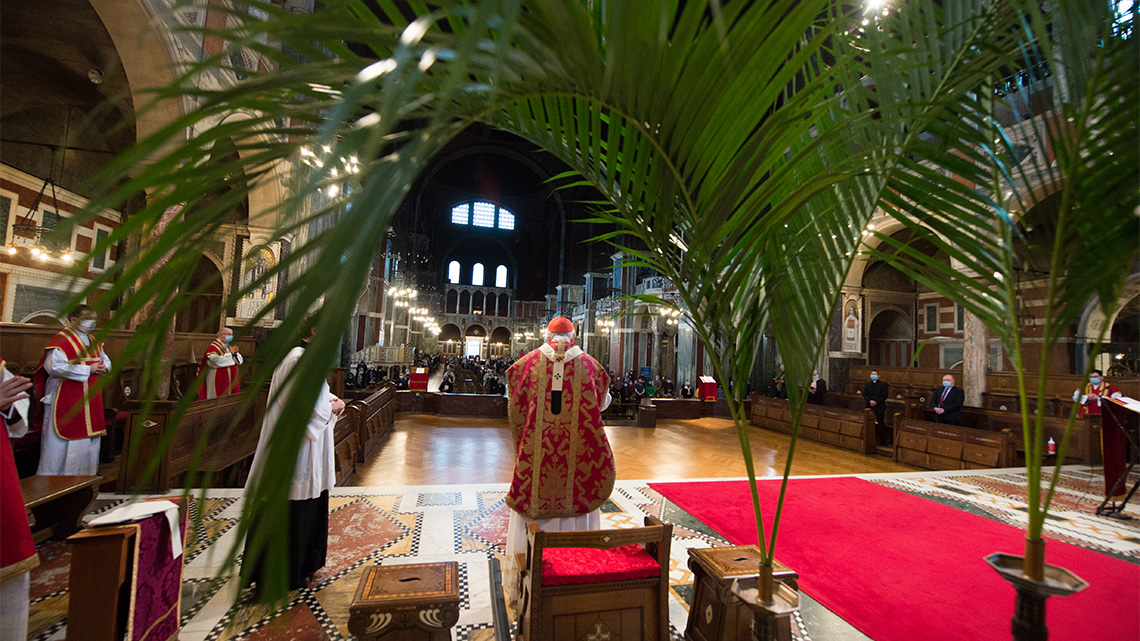Passion Sunday, or Palm Sunday, marks the beginning of Holy Week and the commemoration of Our Lord's triumphant arrival into Jerusalem.

Passion Sunday, or Palm Sunday as many people commonly know it, marks the beginning of Holy Week, the final Sunday of Lent – a day we commemorate the triumphant arrival of Christ into Jerusalem, just days before the crucifixion.
“[The disciples] brought the donkey and the colt and put on them their cloaks, and he sat on them. Most of the crowd spread their cloaks on the road, and others cut branches from the trees and spread them on the road. And the crowds that went before him and that followed him were shouting, ‘Hosanna to the Son of David! Blessed is he who comes in the name of the Lord! Hosanna in the highest!’
“And when he entered Jerusalem, the whole city was stirred up, saying, ‘Who is this?’ And the crowds said, ‘This is the prophet Jesus, from Nazareth of Galilee.'”
On Palm Sunday the faithful receive palm fronds which are used to re-enact the triumphant arrival of Our Lord in Jerusalem. The palms are seen as a symbol of peace and victory. During the Palm Sunday Mass, palms are distributed to parishioners who carry them in a ritual procession into the church. The palms blessed on Palm Sunday are used in the procession of the day, then taken home by the faithful and used for personal devotion. Some people leave them in the church but the palms must not be thrown away as they are blessed. From the blessed palms the ashes are procured for the following year’s Ash Wednesday observance.
The faithful will participate to one of the Gospel accounts of Christ’s Passion.
The Liturgical colours of the Palm Sunday Mass are red and white, symbolising the redemption in blood that Christ paid for the world.
A week later, Christ will rise from the dead on the first day of Easter.